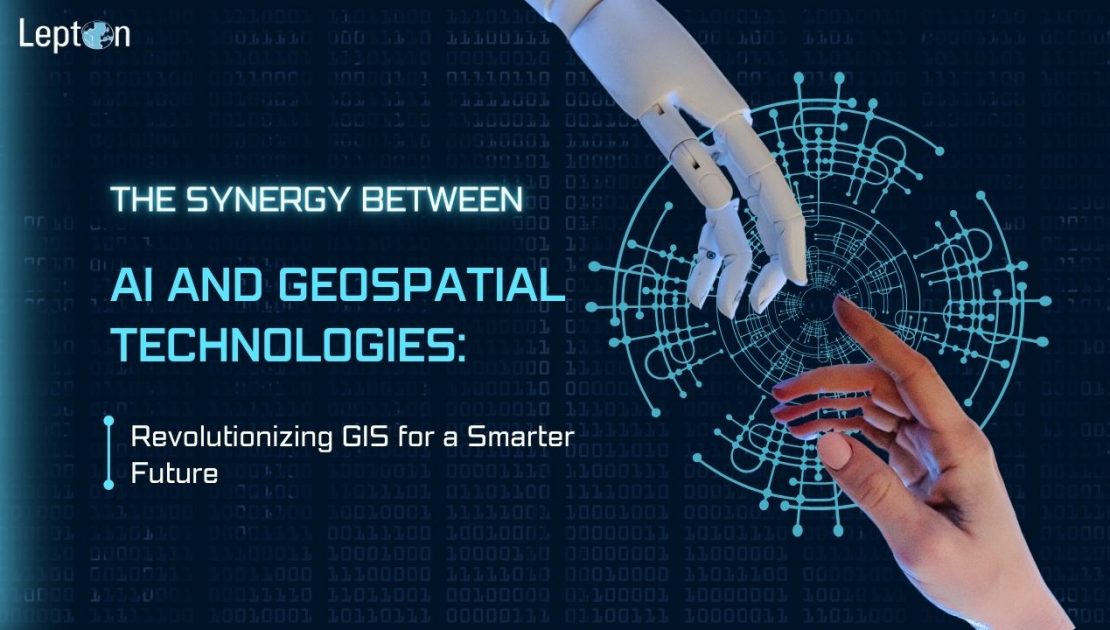In today’s rapidly evolving technological landscape, the integration of Artificial Intelligence (AI) and Geospatial Technologies is transforming the field of Geographic Information Systems (GIS). This synergy between AI and GIS is paving the way for a smarter and more connected future. By automating data processing, enhancing predictive analytics, and revolutionizing data visualization, AI is unlocking the full potential of geospatial information.
The Traditional Role of GIS
Traditionally, GIS has been used to store, manage, and analyze spatial data, enabling users to visualize and interpret complex information through maps and graphical representations. However, as the volume and complexity of geospatial data continue to grow, traditional GIS methods are becoming insufficient in handling the sheer scale and diversity of this information.
The Power of AI in GIS
AI, with its ability to learn from vast amounts of data and recognize patterns, is revolutionizing GIS by automating data processing and analysis. Machine learning algorithms can be trained to extract valuable insights from geospatial data, saving time and resources while providing up-to-date and comprehensive information for informed decision-making.
Automation of Data Processing and Analysis
AI-powered tools can analyze satellite imagery and remote sensing data to monitor land use changes, track deforestation, and assess the impact of natural disasters in real-time. This automation allows for faster and more accurate analysis, providing valuable information for urban planning, transportation, and public safety initiatives.
Predictive Analytics for Future Insights
By combining historical geospatial data with AI algorithms, predictive models can be created to forecast future events and trends. These models can anticipate the spread of infectious diseases, identify areas at risk of flooding or landslides, and predict the impact of climate change on ecosystems and human populations. This information enables governments, businesses, and communities to better prepare for and mitigate the effects of these events.
Enhanced Visualization and Interaction
AI-powered technologies, such as Augmented Reality (AR) and Virtual Reality (VR), are transforming the way we visualize and interact with geospatial data. AR and VR tools allow users to immerse themselves in virtual environments, providing a more intuitive and engaging experience. City planners can use these tools to visualize proposed infrastructure projects in their real-world context, assessing potential impacts and benefits.
Real-World Applications of AI and GIS
The integration of AI and GIS has already yielded significant benefits across various industries. Let’s explore some real-world examples that showcase the power of this synergy.
1. Supply Chain Management: FedEx
FedEx, a global logistics leader, relies on GIS to track its fleet and ensure timely deliveries. By integrating AI’s predictive capabilities, FedEx can identify when a plane would need maintenance or parts, optimizing their supply chain and improving efficiency.
2. Climate Change Monitoring: Microsoft
Microsoft partnered with Esri and Impact Observatory to build an AI-powered land-cover map. This map, combined with location intelligence, allows for near real-time monitoring of global changes, helping answer pressing questions about climate change and environmental crises.
3. Resilience Planning: AT&T
AT&T used big data and location-based technology to map climate risks in the US for the next 30 years. By leveraging location intelligence and AI, AT&T can predict supply chain vulnerabilities, enabling organizations to assess their own risk and operations.
4. Transportation Infrastructure: Autobahn GmbH
Autobahn planners developed a deep learning program to identify indicators of road conditions on one of Germany’s busiest highways. By combining AI and location intelligence, they can determine when and where to invest in roadwork, preventing closures and the need for extensive repairs.
5. Sustainable Land Management: Finnish Forest Centre
Automation has streamlined the management of Finnish forests by using AI-driven algorithms to analyze imagery and climate data. This proactive management approach optimizes growth and harvest cycles, ensuring sustainable land management practices.
6. Project Planning: Army Corps of Engineers
The Army Corps of Engineers maintains water depth for ports and channels in the US. By pairing AI with location intelligence, planners can analyze millions of vessel tracking pings to identify areas that need dredging, saving millions of dollars annually.
The Emergence of GeoAI: Geospatial Artificial Intelligence
The convergence of location intelligence, AI technologies such as machine learning and deep learning, and GIS software is known as GeoAI. GeoAI empowers organizations to answer complex questions at scales and frequencies never achieved before.
Conclusion
The integration of AI with GIS is revolutionizing the way we collect, analyze, and visualize geospatial data. Through automation, predictive analytics, and enhanced visualization, AI is unlocking the full potential of geospatial information. Real-world applications across industries demonstrate the power of this synergy, leading us towards a smarter and more connected future. As we continue to explore the possibilities of AI and geospatial technologies, we can expect even more innovative tools and applications to emerge, shaping a better world for all.

